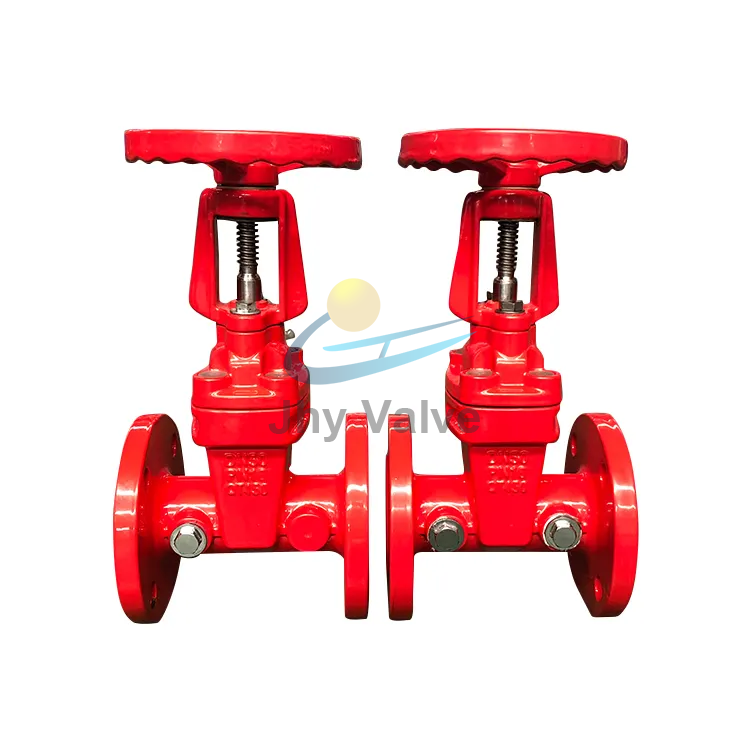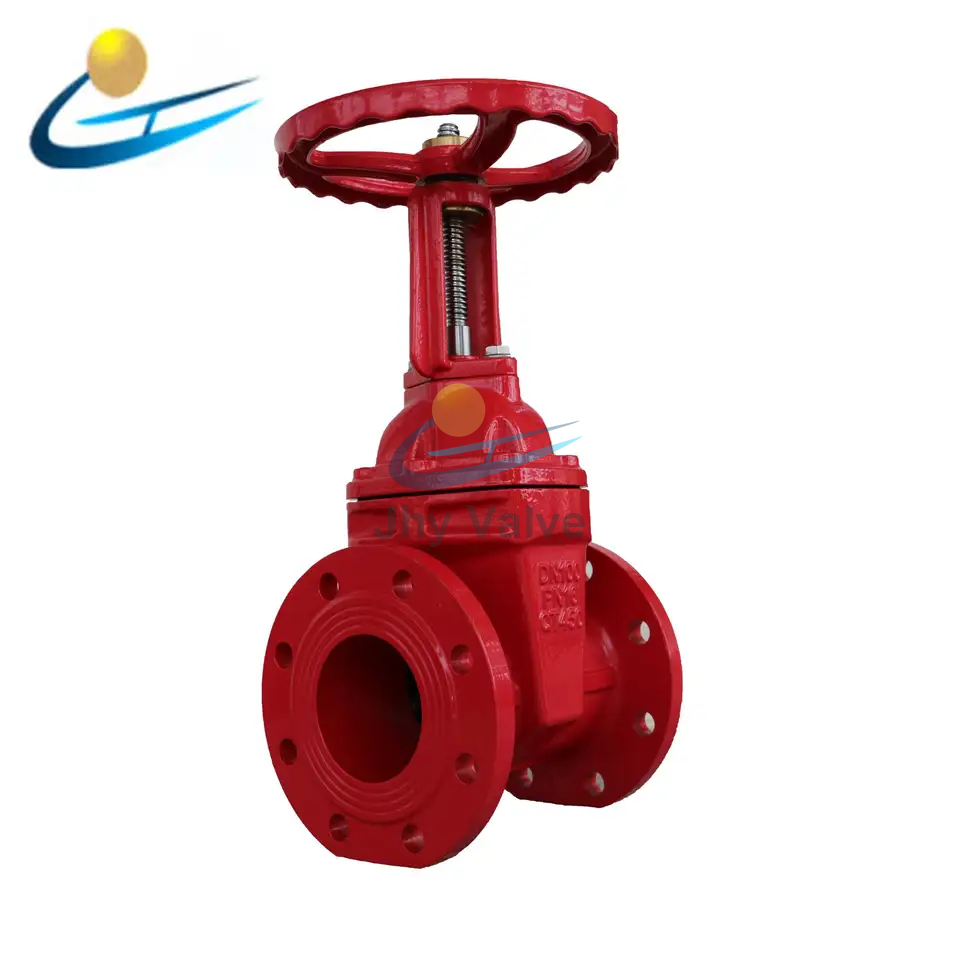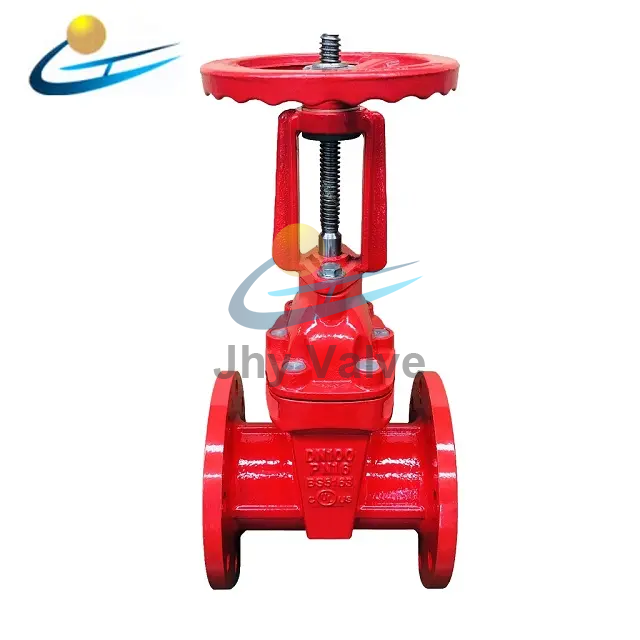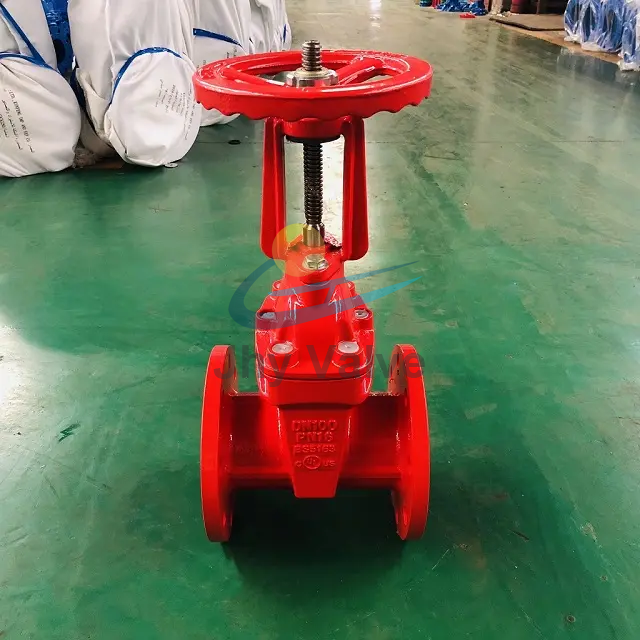Rising Stem Soft Seat Fire Gate Valve Description




Size2"-24"
Standard: DIN / BS / ANSI / Korean
Structure: Gate
Pressure: PN10, PN16, PN25
Coating: WRAS approved epoxy powder at 300 micron thick
Media: Water
Certificate: ISO, SGS, CE
The Rising Stem Soft Sealed Fire Gate Valve is an essential and reliable component used in fire protection systems. This gate valve is designed to control the flow of water or fire-extinguishing agents during fire emergencies.
With its unique rising stem mechanism, the valve provides clear visual indication of whether it is open or closed, allowing for easy monitoring and control. The soft-sealed design ensures a tight seal, preventing leakage and ensuring efficient flow control even under high pressure conditions.
Built with fire-resistant materials, this gate valve is specially designed to withstand extreme temperatures and maintain its integrity during fire incidents. Its robust construction guarantees long-lasting performance and dependable operation in critical situations.
The Rising Stem Soft Sealed Fire Gate Valve finds widespread use in various industries, such as commercial buildings, industrial facilities, and residential complexes. It plays a crucial role in safeguarding lives and property by effectively managing and directing the flow of fire-suppressing agents.
Choose the Rising Stem Soft Sealed Fire Gate Valve for its superior performance, durability, and peace of mind in fire protection applications. Rest assured that this valve will meet your needs for efficient flow control and contribute to the overall safety of your fire protection system.
| Parameter |
Description |
|---|
| Size |
2"-24" |
| Material |
Valve body and key components made of materials such as cast iron, ductile iron, or stainless steel |
| Pressure Rating |
Maximum pressure the valve can withstand (in psi or bar) |
| Temperature Rating |
Maximum temperature the valve can handle (in °F or °C) |
| End Connection |
Type of end connection, e.g., flanged, wafer, threaded, grooved |
| Seat Material |
Material for the valve seat, providing a tight seal when closed |
| Operation |
Method of valve operation, e.g., manual (handwheel, lever), automated (electric, pneumatic) |
| Fire Rating |
Classification indicating the valve’s resistance to fire (in minutes) |
Rising Stem Soft Seat Fire Gate Valve Design
The design of a rising stem soft seat fire gate valve incorporates several key elements:
-
Valve Body: The valve body is typically made of strong and durable materials like cast iron or ductile iron. It provides the structural integrity and strength needed to withstand high-pressure and fire-resistance requirements.
-
Stem: The stem is a vertical shaft that connects the handwheel or gearbox to the gate. It moves in a linear upward motion when the valve is opened or closed. The rising stem design provides a visual indication of the valve’s position, making it easy to determine if the valve is open or closed.
-
Gate: The gate is a moveable element that controls the flow of fluid through the valve. In a rising stem soft seat fire gate valve, the gate is usually a solid or resilient wedge. The solid wedge design is suitable for higher-pressure applications, while the resilient wedge design allows for better sealing on non-uniform seating surfaces.
-
Seat: The soft seat is the area where the gate forms a seal when the valve is in the closed position. The seat is typically made of resilient materials such as EPDM or NBR rubber. The soft seat design ensures a tight seal, preventing any leakage or seepage of fluids.
-
Bonnet: The bonnet is the top cover of the valve that provides access to the internal components. It is usually bolted to the valve body, ensuring a secure and leak-proof closure. The bonnet design enhances the valve’s resistance to fire and contributes to its fire-resistance capabilities.
-
Handwheel or Gearbox: Rising stem soft seat fire gate valves can be operated manually using a handwheel or with the assistance of a gearbox for larger valves. The handwheel provides a means for manual operation, allowing users to open or close the valve by turning it. Gearboxes are used for valves that require more torque to operate.
-
Flange Ends: The valve body is typically designed with flange ends, allowing for easy installation and connection to the pipeline system. The flanges provide a sturdy and leak-proof connection, ensuring reliable performance of the valve.
-
Fire-resistant Coating: Some rising stem soft seat fire gate valves may also feature a fire-resistant coating on the external surfaces. This coating helps protect the valve from high temperatures and improves its fire-resistance properties.
Rising Stem Soft Seat Fire Gate Valve Features:
-
Rising stem: These valves feature a stem that moves in a linear upward motion as the valve opens. This rising stem design provides a visual indication of the valve’s position, making it easy to determine whether the valve is open or closed.
-
Soft seat: The soft seat design of these valves ensures a tight seal when the valve is closed. The soft seat material, often made of resilient materials such as EPDM or NBR rubber, provides effective sealing to prevent any leakage or seepage of fluids.
-
Fire-resistant construction: Rising stem soft seat fire gate valves are specifically designed to withstand high temperatures and are suitable for use in fire protection systems. They are typically constructed with durable materials such as cast iron or ductile iron to ensure their fire-resistant properties.
-
Bolted bonnet: These valves often feature a bolted bonnet design, which provides a secure closure and enhances the valve’s resistance to fire. The bonnet is bolted to the valve body, ensuring a tight and leak-proof seal.
-
Solid wedge or resilient wedge: Rising stem soft seat fire gate valves can have either a solid wedge or a resilient wedge design. A solid wedge is more suitable for higher pressure applications, while a resilient wedge allows for better sealing on irregular or non-uniform seating surfaces.
-
Handwheel or gearbox operation: These valves can be operated manually using a handwheel or with the assistance of a gearbox for larger valves. The handwheel or gearbox allows for easy and precise operation, enabling quick adjustments to the valve’s position.
-
Pressure and temperature ratings: Rising stem soft seat fire gate valves are available in various pressure and temperature ratings to suit different applications and operating conditions. It is important to select a valve with the appropriate rating to ensure its proper performance and reliability.
-
Compliant with industry standards: These valves are typically manufactured in accordance with recognized industry standards, such as API, ANSI, or ISO. Compliance with these standards ensures the valves meet specific requirements for quality, performance, and safety.OS&Y Rising Stem Resilient Seat Gate Valve for Water (jhyvalve.com)
Rising Stem Soft Seat Fire Gate Valve Advantages:
-
Fire-resistance: These valves are specifically designed and tested to withstand high temperatures and are suitable for use in fire protection systems. They can effectively regulate and control the flow of fluids in case of a fire.
-
Reliable sealing: The soft seat design of these valves ensures a tight seal, preventing any leaks or seepage of fluids. This is crucial in fire protection systems, as any leakage can compromise the effectiveness of the system.
-
Easy operation: The rising stem design allows for easy identification of the valve position (open or closed) by visual inspection. The stem rises as the valve opens, providing a clear indication of its status. This makes it easier for operators to quickly and accurately control the flow of fluids during emergencies.
-
Durability: These valves are typically made of robust materials such as cast iron or ductile iron, which provide excellent strength and durability. They are designed to withstand harsh operating conditions and continue to function reliably over an extended period.
-
Low maintenance: The soft seat design reduces the need for frequent maintenance or repair. The soft seat material helps to minimize corrosion and wear, ensuring a longer service life and reducing downtime.
-
Versatility: Rising stem soft seat fire gate valves are available in various sizes and pressure ratings, making them suitable for a wide range of applications. They can be used in fire protection systems, water supply systems, irrigation systems, and other industries where fire-resistance and flow control are essential.














